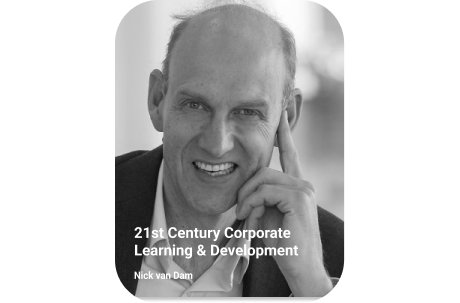
Learning and Development: Predictions and Trends for 2023
The field of L&D needs to adapt and grow as the world keeps changing quickly. This is important in order to keep up with the demands of the modern workplace. In 2023, new trends and predictions are expected to emerge as the L&D sector develops and innovates. This makes it a fascinating and exciting industry to be working in.
The change to a more agile and dynamic workplace will force organizations focusing their attention on L&D projects. These projects should enable companies in meeting the demands of a new, more agile, and ever-changing working environment.
Here are the most important trends that we expect will impact the learning and development industry this year. Make sure also to check out our free eBook on Modern Learning & Development Strategy by Nick van Dam to see how these trends will influence best practices in L&D strategy.
Artificial Intelligence (AI)
One of the biggest trends in L&D that we expect to see in 2023 is the continued rise of artificial intelligence (AI) and machine learning. AI and machine learning are already being used in many organizations. Mostly to help identify, assess and develop talent. But as well to automate processes such as recruiting and onboarding. AI-powered learning platforms are also being used to provide personalized learning experiences. These can help employees stay up to date with the latest skills and knowledge. The sensational launch of OpenAI’s ChatGPT in November 2022 clearly illustrates the disruptive potential of AI toL&D and how we consume information in general.
Organizations are beginning to recognize AI’s power to improve L&D and create more meaningful learning experiences. AI will become more fully integrated into the learning process in the near future. This will result in more personalized learning possibilities that are individually matched to each employee’s individual requirements and skills.
Virtual Reality (VR)
Virtual and augmented reality (VR/AR) are other important L&D trends which will grow in popularity in 2023. Healthcare, aerospace, and the automotive industry have already adopted this technology, but its promise in the area of learning and development has not yet been completely exploited.
Employees can obtain practical experience in a virtual environment by using VR/AR to design immersive and compelling learning experiences. Additionally, it can imitate actual circumstances and scenarios. This gives workers a fun and interactive approach to learn and hone new abilities.
According to a research report by MarketsandMarkets, the corporate virtual reality market is expected to grow to 20.9 billion USD by 2025 with an annual growth rate of 27.9%.
Microlearning
Since microlearning has been on the rise in the L&D industry for some time, we anticipate its popularity will continue to soar in 2023. Delivering brief, targeted lessons that are adapted to the needs of each individual student is known as microlearning. Microlearning is a terrific approach to make sure that employees keep current with the most recent skills and information. This because it uses bite-sized portions of content that are simple for them to ingest and retain.
By 2023, a sizable number of companies are anticipated to have embraced this strategy. Numerous large corporations, including Microsoft, Google, and IBM, are already utilizing microlearning. By doing so they make sure that their staff have the most recent skills and information.
Gamification
As with microlearning, we anticipate gamification will advance to new heights in 2023. According to ProProfs, gamification is already one of the top 10 must have features companies are asking for in an LMS. Many businesses are working to make their learning programs more immersive and engaging for staff members. Gamification is the use of game mechanics and game components to engage and encourage staff to learn and grow their skill sets. It can be used to reward workers for accomplishments as well as to motivate them to finish assignments.
Looking for quick and simple ways to add gamification to your company’s learning portfolio? Check out our free eBook on Designing Games for Learning and see how to create simple, and engaging games for your employees.
Hybrid Learning
Another trend that is anticipated to continue gaining traction in the learning and development sector in 2023 is hybrid learning. L&D programs that blend online and in-person learning activities are referred to as hybrid learning. As businesses aim to give their employees more flexible and convenient learning options, hybrid learning is gaining popularity. According to a survey by eLearning Industry in 2021, 60% of companies believe hybrid learning has become the most effective way to train employees after the Pandemic.
The option to customize learning experiences, more effectively scale learning programs and the capacity to simultaneously provide learning sessions to in-person and remote personnel are all advantages of hybrid learning.
Anonymous Learning
We also expect anonymous employee learning to gain traction in the field of learning and development in 2023. Anonymous employee learning refers to L&D initiatives that allow employees to participate in learning without revealing their identities. This approach can be particularly useful in situations where employees may be hesitant to ask questions, share their thoughts and ideas, or consume learning content due to fear of retribution, criticism, or embarrassment.
Anonymous learning by employees has a number of potential advantages. For instance, it can foster a more welcoming and inclusive learning atmosphere. This because staff members are more willing to participate if they don’t worry about being criticized for their efforts. Employees are more likely to participate in learning activities if they feel supported, Because of this anonymous employee learning can help to promote a culture of continuous learning and development.
Gig-based Learning
Gig-based learning, refers to hiring freelancers to design and deliver training materials on a project-by-project basis. This approach can be beneficial for organizations because it allows them to bring in specialized expertise and resources on an as-needed basis, rather than hiring full-time employees or committing to long-term contracts with training vendors.
Due to the increased use of technology and the internet gig-based learning is becoming more and more popular. In the coming year, it’s anticipated that the popularity of gig-based learning will increase as businesses look for methods to save costs and increase flexibility in the face of unpredictable economic conditions. It’s projected that by 2023, most businesses would have included gig-based learning in some capacity into their learning and development plans.
Experiential Learning
A shift toward individualized and immersive learning is another trend that is predicted to gain popularity in 2023. Hands-on and holistic experiences have been shown to be more successful in retaining knowledge and skills; they can also make the learning process more engaging and enjoyable for the learners. This tendency is being fueled further by the advent of new technologies such as virtual and augmented reality, VR allows learners to interact with content in more dynamic and realistic ways.
For help creating enriching learning experiences for your employees, check out our free eBook on Experiential Learning with lots of examples of how to use role-playing, simulations, discovery learning, problem solving, and mentoring to engage your employees in hands-on learning.
Social Learning
We anticipate that social and collaborative learning will keep expanding in 2023. Peer-to-peer learning and information sharing will likely receive more attention in L&D. For instance, organizations like GE and Deloitte have put in place social learning platforms that let staff members connect share knowledge and their expertise.
Mobile Learning
Due to its adaptability and ease, mobile learning is another important technology that will thrive in 2023. Mobile learning gives staff members access to educational materials whenever and wherever they need it, making it a wonderful choice for businesses wishing to offer more open and interesting learning opportunities.
The market for mobile learning is expected to continue to grow significantly in the years to come. According to a 2022 report by TBRC Business Research, the mobile learning market is expected to grow at an annual rate of 32% per year until 2026. Mobile learning is gaining popularity among businesses as a part of their learning and development strategy since it provides employees with easy access and flexibility. By 2023, a large percentage of businesses are expected to have implemented mobile learning as a result of this pattern continuing.
Overall, 2023 promises to be another exciting year thanks to the introduction of a number of fresh concepts and technologies that are revolutionizing how businesses approach learning and development. In the upcoming years, a number of trends, including gamification, microlearning, VR/AR, and artificial intelligence (AI), will become more prevalent and assist businesses in providing more individualized and interesting learning opportunities for their staff.
Did you miss out on the biggest learning and development trends last year? Download a free copy of our Top L&D Trends 2022 Report with insight from more than 300 of the world’s most influential L&D leaders.

Download free L&D content

Modern L&D Strategy by Nick van Dam
Download a free copy of our best-selling eBook with the newest trends in Learning & Development strategy by the former Global Chief Learning Officer at McKinsey & Co.

Free Learning & Development content
More about Learning & Development

Adaptive Learning Systems: Personalized Training at Scale
In the fast-paced realm of corporate Learning & Development, it’s imperative to keep abreast of emerging strategies that can reshape the way we train employees. Among the most significant innovations in the field is the concept of “Adaptive Learning Systems.” These systems are not just changing the game; they’re altering the rules, allowing Learning & Development professionals to deliver highly personalized training for employees while setting new standards for adaptive e-learning in organizations.

Sustainable Learning and Development in L&D
In recent years, the corporate world has witnessed a significant shift towards sustainability and eco-conscious practices. As Learning & Development (L&D) professionals, it’s our responsibility to ensure our training programs align with these eco-friendly developments. In this article, we will delve deeper into the concept of sustainable learning and development, explore its significance, and discuss various ways to incorporate eco-friendly training into your L&D programs.

Mindful Learning in Corporate L&D: Fostering Well-being
In today’s fast-paced corporate world, Learning and Development (L&D) professionals face a unique challenge. They must equip employees with new skills and knowledge while ensuring their well-being in a demanding work environment. Mindful Learning offers an innovative solution to this challenge. In this article, we’ll explore the concept of Mindful Learning and how it fosters well-being in the corporate L&D space. We’ll also delve into Mindful Training Techniques that can be applied to create a more productive, balanced, and engaged workforce.

Unlocking Well-Being: An Introduction to Holistic Time Management
In the fast-paced world of corporate learning & development, time is both a precious resource and a common challenge. Learning & Development (L&D) professionals often find themselves balancing myriad tasks, from designing training programs to fostering employee growth. However, amid this hustle, the concept of holistic time management emerges as a beacon of well-being and productivity. This blog post embarks on a journey to explore holistic time management, uncovering strategies that promote well-being in the workplace. Our goal is to provide L&D professionals with actionable insights and techniques to lead healthier, more fulfilling professional lives.
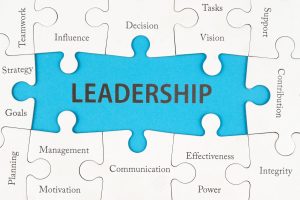
Hybrid Leadership Manual: Leading and Managing Teams in the New Normal
In the realm of corporate learning and development, the winds of change are blowing stronger than ever. Learning & Development (L&D) professionals are at the forefront of these transformative times. The hybrid workplace, born out of the challenges posed by the “new normal,” demands a fresh perspective on leadership and team management. In this comprehensive blog post, we embark on a journey to explore the multifaceted concept of hybrid leadership. Our goal is to provide L&D professionals with not just a theoretical understanding but actionable insights and techniques that empower them to thrive in this evolving work landscape.

Sustainable Corporate Learning: Green Training Practices
In today’s ever-evolving world of Learning and Development (L&D), the call for sustainability has never been more urgent. As Learning & Development Professionals, we have a unique opportunity and responsibility to not only foster professional growth but also to do so in an environmentally conscious way. In this comprehensive article, we’ll explore Sustainable Training Practices, delve into the realm of Eco-Friendly Corporate Learning, and uncover the value of Environmentally Friendly Learning Programs. Let’s embark on a journey towards a greener, more sustainable future for corporate training.

Gamification in Learning and Development: Innovative Training Games
In the fast-evolving realm of Learning and Development (L&D), staying at the forefront is critical. As learning professionals, we constantly seek innovative ways to captivate, motivate, and empower our learners. A dynamic trend that has taken L&D by storm is gamification. In this comprehensive article, we’ll take a deep dive into the world of Gamification in Learning and Development, exploring the fascinating realm of Innovative Training Games and the transformative potential of Gamified Training Solutions.

Neuroscience in Learning: Maximizing Training Impact
In the fast-paced world of corporate Learning & Development, staying at the cutting edge is essential. One powerful tool that is transforming the way we approach training is the application of neuroscience. Learning & Development professionals are beginning to harness the insights from brain science to create brain-friendly training methods that significantly boost learning outcomes. In this comprehensive article, we’ll explore the exciting intersection of neuroscience and corporate training, uncovering how understanding the brain can revolutionize your approach to employee development.

Mastering Virtual Collaboration: A Guide to Running Effective Online Meetings
The year 2020 brought about a profound transformation in the way we work and communicate. The global pandemic forced organizations and individuals to adapt rapidly to a new reality, one where remote work and virtual collaboration became the norm. This paradigm shift necessitated a reevaluation of how we conduct meetings and engage in teamwork. For Learning and Development professionals mastering virtual collaboration emerged as a critical skill for fostering productivity and maintaining business continuity.

Mental Health Training: Fostering Employee Well-being
In today’s rapidly evolving corporate landscape, the significance of employee well-being, particularly mental health, has taken center stage. Learning & Development professionals are increasingly recognizing the critical role they play in fostering a mentally healthy workplace through training. In this comprehensive article, we will delve deeper into the importance of mental health training for employees, explore how Learning & Development can contribute to well-being in the workplace, and discuss the role of well-being training in creating a healthier, more productive workforce.

Mastering Workplace Wellness: A Manager’s Guide to a Healthier, Happier Work Environment
In the fast-paced world of corporate learning and development, one aspect that is gaining increasing recognition is the vital role of workplace wellness. Learning and development professionals are realizing that a healthier and happier work environment directly contributes to employee productivity, engagement, and overall success. In this article, we will delve into the essential components of mastering workplace wellness, offering valuable insights and strategies that Learning & Development professionals can implement to promote employee well-being. Let’s explore workplace wellness strategies, employee well-being programs, creating a healthier work environment, initiating employee wellness initiatives, and managing workplace stress effectively.

Effective Strategies for Remote Workforce Training
In today’s rapidly evolving corporate landscape, remote work has become a norm, and with it, the need for effective remote workforce training has surged. Learning & Development professionals are at the forefront of this transformation, seeking innovative ways to ensure that distributed teams receive the training they need to excel in their roles. In this comprehensive article, we will delve deeper into the best practices and virtual employee training techniques that can help you create engaging online training programs for your remote workforce.

AI and Personalization in Corporate Learning
In the rapidly evolving field of corporate learning and development, there are two dynamic forces shaping the future: Artificial Intelligence (AI) and Personalization. For Learning & Development professionals, these aren’t just buzzwords; they represent a transformative shift. In this comprehensive article, we will dive deep into the realm of AI in Corporate Learning, explore the potential of Personalized Learning Solutions, and examine how AI is revolutionizing employee training. Prepare to gain a profound understanding of these cutting-edge trends and discover actionable strategies that will set your training programs on a path to excellence.
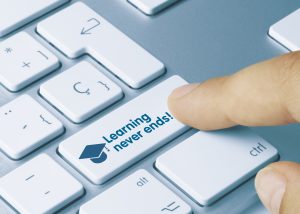
Unlocking Business Success: The Power of Continuous Learning
In the ever-evolving landscape of business, the adage “adapt or perish” couldn’t be more apt. The key to thriving in this dynamic environment is not just innovation or strategy; it’s continuous learning. Whether you’re an entrepreneur, a seasoned business professional, or a Learning & Development expert, embracing the concept of lifelong learning is the most potent tool in your arsenal. In this article, we explore how continuous learning fuels business growth, delving into effective Learning and Development strategies that foster professional development and support lifelong learning in the corporate world.

Mastering the Learning Organizations: Strategies for Managers
In today’s dynamic business landscape, the concept of a learning organization (LO) has evolved from a mere ideal to a strategic necessity. Companies are increasingly recognizing the paramount need to continually learn, adapt, and innovate in order to stay competitive. In this article, we embark on an exploration of highly effective strategies that managers can employ to transform their organizations into genuine learning organizations. This journey will delve into the realms of earning Organization Strategies, Managerial Learning and Development, Building a Learning Culture, and Managerial Training Best Practices.

Leveraging Neuroscience and Cognitive Techniques for Effective Training
In today’s rapidly evolving corporate landscape, Learning & Development (L&D) professionals face an ongoing challenge: how to enhance training programs and elevate learning outcomes in a way that keeps pace with change. Fortunately, there is a cutting-edge approach gaining prominence in the field: the integration of cognitive learning techniques with the principles of neuroscience. This comprehensive article will take an in-depth look into the captivating world of neuroscience in learning and explore how it can be leveraged to create more effective training methods. We’ll provide actionable insights, strategies, and unique perspectives to equip you for success in the dynamic world of L&D.

Mobile Learning: Strategies and Benefits for a Mobile-First Workforce
In today’s dynamic corporate landscape, where remote work and flexibility are the new norm, Learning & Development professionals face the exciting challenge of adapting training methods to meet the needs of a mobile-first workforce. Mobile learning, or mLearning, has emerged as a transformative approach to corporate training, offering numerous advantages for both organizations and employees.

Building a Learning Culture in Large Companies: A Blueprint for Success
In the dynamic realm of corporate Learning & Development (L&D), the establishment of a robust learning culture is essential for achieving sustained growth and adaptability. In this comprehensive article, we will delve into the profound significance of creating a learning culture in large organizations, with a specific focus on strategies that Learning & Development professionals can employ. We’ll explore the multifaceted aspects of this endeavor, offering practical insights and actionable techniques to cultivate a learning-centric corporate culture that not only fosters professional development but also nurtures employee growth and engagement.

The Impact of Remote Work on Corporate Learning Strategies
In the ever-evolving field of corporate Learning & Development (L&D), the surge in remote work has brought about profound changes, shaping corporate learning strategies. As L&D professionals navigate this transformative era, it’s essential to recognize how remote work influences corporate learning and explore innovative solutions, including virtual learning for remote teams and effective remote employee training solutions.
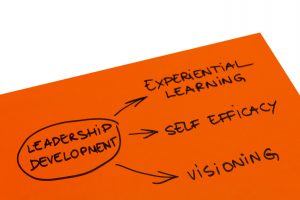
Unlocking Potential: A Deep Dive into Experiential Learning Techniques
A Paradigm Shift in Learning In the ever-evolving landscape of Learning & Development, the traditional approach to education is undergoing a profound transformation. Today, we embark on a journey of discovery into the realm of experiential learning techniques, a dynamic and hands-on approach to learning that is changing the game for professionals. In this exploration, we will dive deep into the world of hands-on learning methods, practical learning strategies, professional development approaches, and the best practices that are reshaping the future of learning.
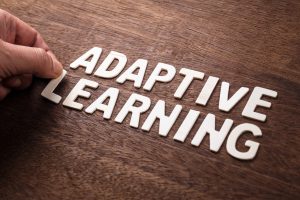
Tech-Driven Learning: Adapting to Changing Needs – Insights from a Learning Expert
Navigating the Future of Learning In the dynamic realm of Learning & Development (L&D), technology has risen as a transformative force, reshaping how professionals approach education and development. To embark on this journey of exploration into the world of Tech-Driven Learning, we are guided by a seasoned expert, the Chairman of the Learning and Performance Institute and Editor of Inside Learning Technologies Magazine. Together, we will navigate the seas of learning technology trends, delve into adaptive learning solutions, unlock the world of professional development online, and gain digital learning insights.

Optimizing L&D for Hybrid Workforces: Best Practices and Success Stories
In the contemporary corporate world, the emergence of hybrid workforces has heralded a significant paradigm shift in how organizations operate. For Learning and Development (L&D), this shift brings about unique challenges and opportunities. This article is your guide to navigating the complexities of hybrid workforces, offering comprehensive insights, practical tips, and inspiring success stories.

AI and Data Analytics for Personalized Learning in Corporate Training
In today’s rapidly evolving corporate landscape, Learning & Development (L&D) professionals are faced with the multifaceted challenge of delivering training that meets the diverse needs of employees across various roles and skill levels. Traditional one-size-fits-all learning models are increasingly inadequate in catering to the unique learning requirements of modern workforces. The convergence of artificial intelligence (AI) and data analytics has ushered in a new era, offering unprecedented opportunities to transform conventional learning approaches into dynamic and personalized learning journeys.

Practical strategies to maximize employee learning using technology
In the rapidly evolving landscape of Learning & Development, the symbiotic relationship between technology and employee learning has emerged as a transformative catalyst. This article stands as a guiding beacon for Learning & Development Professionals leading the way to harnessing technology’s full potential to revolutionize employee development. Embarking on this transformative journey, we will explore practical strategies that harness the prowess of technology to maximize learning potential, redefine learning techniques, unveil the myriad benefits of e-learning, and underscore the pivotal role of Learning & Development Professionals in this digital revolution.

Mastering Training Excellence: In-Depth Insights from Industry Experts
In the ever-evolving landscape of Learning & Development, the pursuit of training excellence has transitioned from a mere aspiration to an essential journey. This article acts as a guiding compass, directing Learning & Development Professionals towards the zenith of mastering training skills. Within this voyage, we navigate through a comprehensive collection of in-depth insights, each meticulously crafted by industry experts, as we venture to unlock the intricate secrets that underlie training success.

Enhancing Organizational Interactions and Employee Learning through Digital Training
In an era marked by rapid technological advancements, the significance of harnessing digital training to enhance organizational interactions and elevate employee learning cannot be underestimated. This meticulously crafted guide is tailored to meet the needs of astute Learning & Development Professionals. Together, let’s embark on a profound journey that not only explores the facets of digital training but also delves deep into its strategic intricacies, unearthing insights and tactical approaches that will reshape the landscape of learning.

Learning Models and Styles: A Comprehensive Guide
Embarking on a journey into the heart of effective learning is a transformative experience. In this article, we delve into the intricacies of “Learning Models and Styles for Adults,” unveiling the secrets of effective learning and self-development. This guide is dedicated to Learning & Development Professionals who seek to master the art of adult learning and empower their learners.

Maximizing Team Flow: Performance and Collaboration in Corporate Learning & Development
In the fast-paced and ever-evolving landscape of corporate Learning & Development (L&D), the quest to unlock team flow has become an essential goal for organizations seeking to maximize performance and collaboration.
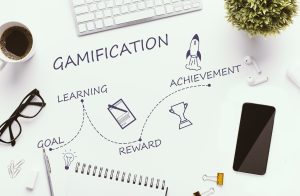
Unlocking Engaging Learning Experiences: Gamification for Effective Knowledge Acquisition
Welcome to a new era of engaging learning experiences that captivate learners and foster effective knowledge acquisition! In this blog article, we will delve deep into the transformative potential of gamification in Learning & Development (L&D). As a Learning & Development professional you have the opportunity to harness the benefits of gamified learning experiences and ride the waves of gamification trends to revolutionize your training programs.
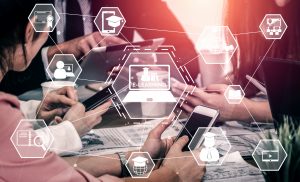
Designing User-Focused, Data-Driven Learning for Today’s Digital Learners
In today’s rapidly evolving digital landscape, Learning & Development (L&D) professionals are faced with the challenge of designing effective learning experiences that resonate with modern digital learners. This blog article delves into an innovative approach to learning design that revolves around user-focused strategies and data-driven methods. By adopting this forward-thinking methodology, L&D professionals can create impactful learning experiences that drive behavioural change, foster engagement, and optimize performance management, thereby ensuring the success of their organizations.

The Evolving Landscape of Hiring: Transforming Learning & Development Strategies for the Modern Workforce
In the fast-paced and ever-changing corporate world, Learning & Development (L&D) professionals play a pivotal role in shaping the success of organizations. As the landscape of hiring evolves, it is crucial for L&D strategies to adapt to the needs of the modern workforce. This article will explore how Learning & Development professionals can harness the power of Talent Acquisition and Talent Development to transform their strategies and drive organizational growth.

Emotional Intelligence in L&D: Building Resilient Teams
In the fast-paced corporate landscape, building resilient teams is essential for achieving success and overcoming challenges. Resilient teams can adapt to changes, maintain high levels of productivity, and foster a positive work environment.


